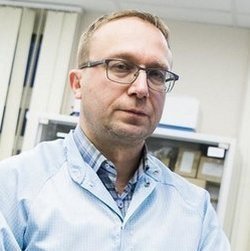Kazan to remain without collective immunity to COVID-19
Doctors have studied the indicators of those who were ill during the pandemic year and indicated that the citizens still do not have immunity
Every third Kazan citizen who has been tested for antibodies has had coronavirus. This follows from the research results of private medical clinics. Since the beginning of the pandemic, monitoring has been carried out in all major cities of Russia. According to it, 31,2% of Kazan residents tested positive for Class G antibodies. This is higher than in Moscow, St. Petersburg, Nizhny Novgorod, but lower than in Samara (39,1%) and Ufa (33,9%). The Department of Rospotrebnadzor for the Republic of Tatarstan did not comment on the difference in indicators, and the experts interviewed by Realтnoe Vremya agreed that collective immunity in Kazan has not yet been formed and is even half as low as stated in the above-mentioned figures. “It is better to get acquainted with the virus in a good way — to be vaccinated with vaccines, because it will remain with us," warned Albert Rizvanov, the director of the Scientific and Clinical Centre for Precision and Regenerative Medicine.
How many Kazan residents have been ill
Since the beginning of May last year, antibodies to class G coronavirus have been detected in a third (31,2%) of Kazan residents. This was reported to Realnoe Vremya by the authors of the project Monitoring.Invitro, created to monitor the progress of mass testing for antibodies to COVID-19.
As of April 27 this year, about 20,000 residents of the Tatarstan capital took the tests. Positive results were found in every third person — about eight thousand people. Of course, this is only a cross-section of research within a single medical network, but it nevertheless reflects the picture of what is happening during the pandemic.
The dynamics of detection of patients with coronavirus was going in Kazan on an even upward trend, but three peak days are highlighted on the chart. For example, on March 1, 2020, a jump in positive tests of 39,5% was detected, on April 3 — 38%, and on June 26 — 40%.
In July, after several months of self-isolation, the rate of patients with positive results was 8,3%, and by September it had doubled to 16%. Further indicators grew, though not quickly.
In general, during the autumn wave of the pandemic, the level of patients who were ill increased to 27%. By March, it reached 30%. We can say that the winter did not worsen the epidemiological situation in the city. By April, the indicator rose to 31,2%.
For comparison, on average in Russia, there were 17,9% of patients with positive results of the test for class G antibodies in August, and 38,8% in November. So in Kazan, the indicator is lower.
Women from 18 to 45 years old got infected most often
The average Kazan citizen who has had the virus has a female face. According to the service, 61% are women, mostly between the ages of 18 and 45. The total number is about four thousand people. The remaining 39% are men, mostly of the same age from 18 to 45 years, there are more than 2,500 thousand people. Less than 10% of those who have had the disease are elderly people over 65 years of age.
In other words, the majority of Kazan residents who have been ill are not pensioners, but the working-age population. “The incidence is higher among those who continued to lead a social life, go to work and move around the city," the researchers confirmed.
But the main reason for the statistical incident is that paid tests are conducted on their own initiative, most often women over 30 years old, and pensioners rarely go to clinics with such requests.
“Clean” Moscow and “ill” Samara
The picture looks somewhat different for those who have been ill with coronavirus in large megacities. To date, positive tests for antibodies to COVID-19 in Moscow — 23,3%. At the same time, an order of magnitude more tests were performed here — 433,300. In St. Petersburg — 29,8% in the survey of 167,000 people. In Nizhny Novgorod — 28,4% when testing 12,500 people.
Perhaps, the highest level of positive tests for antibodies to the deadly virus is observed in Samara. By the end of April, the indicator rose to 39,1%. At the same time, almost 50,000 people were tested. Ufa, with a low level of testing (only 16,000 people), showed an increase of up to 34%.
It should be emphasised that the authors of the project of the medical network Invitro do not claim to be a comprehensive study. As stated on the website, the service shows the situation “as it is”. The conclusions are made on the basis of the work of 1,300 offices of the network throughout Russia, where patients apply independently, without a doctor's referral (that is, at their own expense).
Tatarstan epidemiologists are skeptical about this data: “The Department of Rospotrebnadzor in the Republic of Tatarstan does not comment on the results of studies of medical organisations, as they are not sure of their correctness," the press service of the Tatarstan Rospotrebnadzor told Realnoe Vremya. “It is not known what the sample was, for what period, what tests the study was conducted, etc. Such research is carried out by scientific organizations.”
Is there any immunity in Kazan?
“The statistics of Monitoring. Invitro shows that it is too early to talk about collective immunity," the company itself assessed the test results. “At the moment, it is not known how long protective antibodies persist in people who have been ill or vaccinated. And collective immunity means that a part of the population has become immune to any infectious agent.”
Doctors believe that so far there are no signs of a formed collective immunity, when “one infected person infects no more than one person, and those, in turn, one or no one.” They note that “population-based” immunity will be achieved if 60-70% of the population is immune to the coronavirus.

Pavel Zelenikhin, Associate Professor of the Department of Microbiology at the Institute of Fundamental Medicine and Biology of the Kazan Federal University, drew attention to that collective immunity is “fluid and living”.
“First of all, this is a momentary indicator that is formed right here and now — 'at the point'. For this reason, the level of collective immunity of Kazan citizens in 31,2% cannot be considered an objective indicator, because it is not recorded “at the instant”. This indirectly suggests that the real value of collective immunity is much lower than the recorded level," he explained.
How Brazilians got ill again with 70% of antibodies
According to the KFU scientist, the study reflects the “immune response” of Kazan residents accumulated over the year of the pandemic. But it has nothing to do with collective immunity.

The expert also attributed the predominance of women and the working-age population among the ill Kazan residents to that these categories of citizens most often turn to private clinics (today only there one can do tests for antibodies). Probably, some patients need a certificate at the request of an employer or for a trip.
In conclusion, Albert Rizvanov, the director of the Scientific and Clinical Centre for Precision and Regenerative Medicine, recalled that immunity is developed in two ways: through vaccination and after illness. “The best way to get acquainted with the virus in a good way is to get vaccinated," he advises.“After all, the virus will stay with us even if the pandemic passes.”